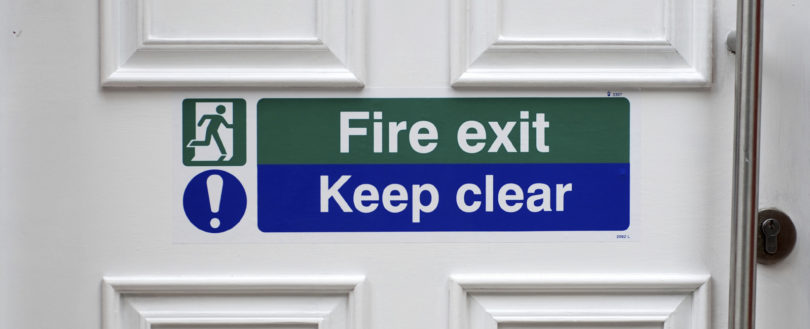- Homepage
- News
- Blogs & Articles
- How to do a fire drill (correctly)

How to do a fire drill (correctly)
Like it? Share it!
26 May 2017 by Will Lloyd, Technical Manager
Fire drills are easy (we can all agree it’s not difficult to walk out of a building) but despite this, there are actually quite a few aspects that must be thought about carefully.
What happens if a particular exit is blocked? What if a staircase is filled with smoke? How would adults help children (if there are any) and other adults evacuate in that instance?
The issue with many fire drills carried out is the regularity and familiarity of the event – using the same routes and the same procedures over and over again. Many people focus on simply how fast they can get everyone to evacuate – and whilst this is an excellent goal to have, it misses out the fact that there may be corridors or stairways or exits that are totally impassable during the event of a fire.
Thinking about the escape routes, discussing alternatives, and making a plan of ‘what would happen if?’ will help minimise the risk of being unable to evacuate the building should a real fire occur.
Children in particular need constant reinforcement and encouragement in order to learn what to do in certain situations, and staff should involve them in giving them a good understanding of the necessary actions. Children must know what to do if they see a fire or smell smoke, what the alarm sounds like, and where the assembly point is.
In addition, staff must have no uncertainty in how to guide vulnerable people to a place of safety. Not all children or adults are able bodied, and not every person on site (young or old) may have the cognitive understanding to know what to do in the event of a fire. Plans must be created for any person with additional needs – whether that is someone with hearing or sight problems, or simply a someone with a recent injury that makes walking or moving difficult or slower.
If there are adults or children with additional needs, it may be better to base them as close as possible to a final fire exit, even if this means swapping some classrooms around to accommodate those needs and ensure that they can use a shorter escape route. It is important to note that very young children may find stairs difficult or may be generally slower at walking, so consider that when thinking about your fire drill strategies.
Fire drills should be regularly carried out and unannounced so everyone is confident and clear of what to do in case there is a real fire.
For more information, download our best practice guide or follow us on Facebook.
-

Will Lloyd
Technical Manager
Related posts
-
Ensuring fire safety in schools: responsibilities, developments, and training
06 October 2023
By Neil Budd, FIA Technical manager
-
On this day, forgotten disasters: Summerland disaster
02 August 2023
By Kirsty Lavell, Marketing Manager
-
Fireside Chat with Hanif Ghodawala, Business Development Manager for Advanced Emergency Lighting Division
01 August 2023
By Kirsty Lavell, Marketing Manager
Related news
-
Business Owner Fined for Breaching Fire Safety Legislation
06 October 2025
-
Addressing Fire Safety Risks in Social Housing
11 February 2025
